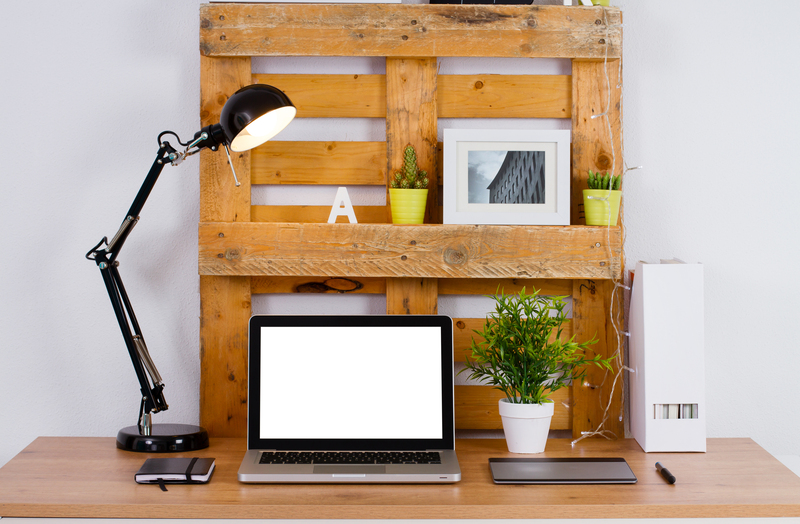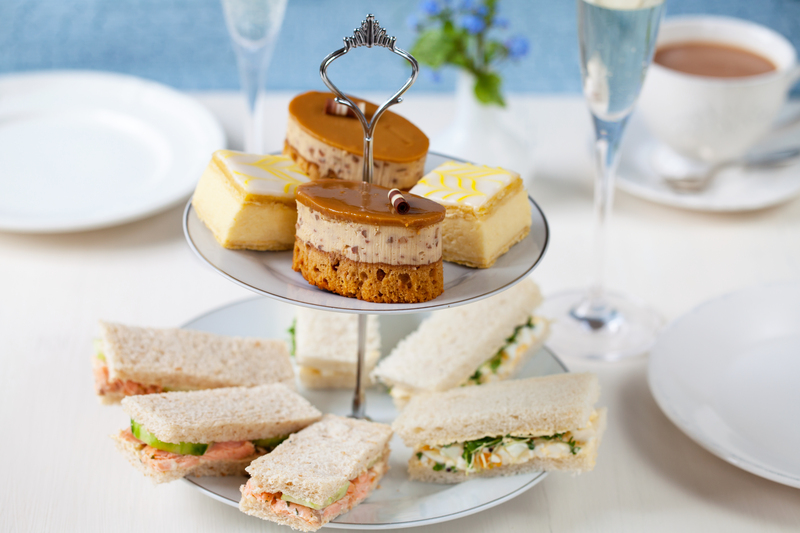Transforming Old Pots and Pans through Recycling and Upcycling
Introduction: Why Should You Care About Old Pots and Pans?
Every household kitchen eventually amasses a collection of cookware that has seen better days. Over time, pots and pans become scratched, dented, discolored, or simply replaced by newer models. Disposing of these old items often means they end up in landfills, contributing to environmental pollution. But what if old cookware could have a new life through recycling or upcycling? In this comprehensive article, we'll explore eco-friendly solutions and creative ideas to transform old pots and pans, turning yesterday's cookware into tomorrow's treasures.

The Environmental Impact of Discarding Cookware
It's easy to overlook the environmental footprint of an old frying pan or a battered saucepan, but the impact of disposal is significant. Most cookware contains materials like stainless steel, aluminum, copper, and non-stick coatings, which may take decades to decompose. When thrown in landfills, these materials can:
- Release toxic chemicals and heavy metals.
- Occupy landfill space for years.
- Waste valuable raw resources.
- Increase emission through improper waste handling.
Making the conscious choice to recycle or upcycle old cookware helps reduce your carbon footprint and supports a more sustainable planet.
The Basics: What is the Difference Between Recycling and Upcycling?
Underneath their similarities, recycling and upcycling are distinct pathways for managing old cookware:
- Recycling breaks down pots and pans into raw materials, which are then used to manufacture new items, thus keeping materials out of landfills and reducing demand for new resources.
- Upcycling, on the other hand, transforms cookware into something new and useful without breaking it down completely. This process often adds greater value and preserves the original form in creative ways.
Both approaches have their own benefits, and choosing the right method depends on the condition of your cookware and your personal creativity.
How to Recycle Old Pots and Pans
Step 1: Identify the Material
Most cookware is made from stainless steel, aluminum, copper, or cast iron. Some pans may also have non-stick or ceramic coatings. Start by checking the type of material of your pot or pan, as this impacts how and where it can be recycled.
- Aluminum: Lightweight and silver-colored, resists rust.
- Stainless Steel: Durable, doesn't rust, often has a shiny finish.
- Copper: Reddish-brown, highly conductive.
- Cast Iron: Extremely heavy and dark--often seasoned for non-stick properties.
- Non-stick or Ceramic Coated: Usually aluminum base with a coating, may need to be separated before recycling.
Step 2: Contact Your Local Recycling Program
Most municipal recycling facilities accept cookware, but it's wise to contact your local recycling center first. Many require you to drop off metal kitchenware at a specialized facility or scrap metal yard. The following tips can help you prepare your cookware for recycling:
- Clean the pans: Remove any food residue, grease, or plastic parts.
- Separate materials: Detach non-metal handles, lids with glass tops, or rubberized parts; some centers can only process pure metal.
Step 3: Take Advantage of Scrap Metal Buyers
Some areas have scrap metal dealer programs that pay a small fee for kitchen metals. This is particularly effective with large amounts of aluminum, stainless steel, or copper, which are highly sought after in recycling industries.
Step 4: Consider Brands with Take-Back Programs
Certain cookware brands now offer recycling take-back initiatives. For example, companies like TerraCycle partner with popular cookware brands to accept old pots and pans for responsible recycling. Check with the manufacturer website to see if such programs are available.
Inspirational Upcycling Ideas for Old Pots and Pans
If you're feeling creative, upcycling is a fantastic way to repurpose old cookware. Here are some inventive and visually appealing ideas to bring new life to your collection:
1. Turn Frying Pans into Wall Art
Old frying pans typically have unique shapes and wonderful silhouettes. Hang them as vintage wall art in your kitchen or garden. You can paint or stencil designs onto the metal surface for a custom look. Arrange several together for an eye-catching statement.
2. Pots as Planters
Transform deep saucepans or stock pots into plant containers. Their longevity and drainage potential make them perfect for herbs or flowers. Add stones or gravel at the bottom, then fill with soil and your choice of plant. For a whimsical touch, paint the outside with colorful patterns.
3. Skillet Clocks
With a little DIY prowess, convert a round skillet into a funky wall clock. Drill a hole in the center, insert a clock kit (available at most craft stores), and decorate the pan to match your home style. This unique timepiece makes for a great conversation piece!
4. Lid Wind Chimes and Garden Ornaments
Metal lids can become delightful wind chimes with the addition of metal utensils, beads, or small tools. String them together using fishing line or sturdy wire, and hang in the garden to enjoy the sounds with every breeze.
5. Cast Iron Bird Baths or Feeders
Re-purpose a cast iron pan as a durable bird feeder or bird bath. Simply clean and secure it to a stump, pole, or hang it in a tree. Birds will flock to your upcycled creation all year round.
6. Candle Molds or Holders
Old metal muffin tins or mini saucepans are perfect for pouring homemade candles. Their shapes create beautiful candle forms, and the metal surface allows for safe cooling and burning.
7. Pot Racks from Old Handles
Upcycle the sturdy handles from broken pots and pans by attaching them to a wooden board or directly to a wall to create a rustic kitchen rack for towels or utensils.
8. Statement From Utensil Art
Old spatulas, ladles, or whisks can become part of sculptural art for the home or garden, either painted or polished, mounted as wall displays or small standalone statues.
The Benefits of Upcycling Cookware
- Reduces landfill waste and minimizes environmental damage.
- Saves money by avoiding purchases of new planters, racks, or decor.
- Encourages creativity and DIY skills.
- Preserves memories associated with beloved kitchen tools.
- Provides unique, customizable home accents that can't be found in stores.
Tips for Successful Upcycling Projects
- Proper preparation: Clean your pots and pans thoroughly. Scrub away rust or grease. Sand rough edges when necessary.
- Safety first: Use appropriate safety gear when cutting, drilling, or painting cookware.
- Choose paints wisely: If painting, select non-toxic, weatherproof options, especially for projects exposed to the elements.
- Embrace imperfections: Scratches and dents provide character!
- Seek community inspiration: Join local upcycling groups or browse social media for new ideas and shared successes.
Transforming Old Cookware: Ensuring Safety and Sustainability
When upcycling, always make sure your transformed pots and pans are safe for their new purpose. Some non-stick coatings (like Teflon in older pans) should not be used for projects with direct food or plant contact, as they can flake off. Likewise, cookware painted or decorated should not be used for cooking again.
For outdoor projects, ensure that your creations can withstand the elements, or apply a weatherproof clear coat to protect them.
Where to Find Old Pots and Pans for DIY Projects
- Ask family and friends for their unwanted cookware.
- Check local thrift stores and charity shops.
- Look for yard sales and estate sales.
- Online classifieds and community "free stuff" groups often have listings for free or low-cost old cookware.
You might be surprised how much potential is waiting in the back of your cupboards--or someone else's!
Inspiring Examples from Around the World
Community Gardens and Public Art
Numerous urban community gardens use recycled pots and pans as planters to grow food in creative ways. Some cities have public art installations made entirely from old kitchenware, raising environmental awareness and bringing communities together.
Renowned Artists and Designers
Some internationally recognized artists specialize in transforming everyday objects, including cookware, into functional sculptures, light fixtures, and furniture. These pieces prove that with a little imagination, even the humblest pot can become a work of art.
Frequently Asked Questions (FAQ)
-
Can rusty pots and pans be recycled?
Yes, most metal recycling facilities accept rusty cookware. Remove as much rust as possible and follow local facility guidelines. -
What should I do with non-stick pans?
Check with your recycling center. Some require you to remove the non-stick coating (this can be difficult at home!), while others can handle coated pans. Never put Teflon in compost or open fires due to toxic fumes. -
Is old cookware safe for upcycling into planters for edible plants?
Use uncoated stainless steel, cast iron, or aluminum pans without toxic residues for edible plant planters to avoid chemical leaching. -
Can glass lids be upcycled?
Absolutely! Glass lids make great serving trays, frames, garden stepping stones, or suncatchers when painted.

Sustainable Living: Small Steps, Big Difference
By transforming your old pots and pans through recycling and upcycling, you are taking a concrete step toward sustainable living. These efforts reduce landfill waste, curb resource consumption, and inspire others to see the hidden value in everyday objects. Whether you choose to recycle responsibly or embark on creative upcycling projects, your actions help forge a more eco-friendly future.
Conclusion: Give New Life to Old Cookware
Next time you replace your kitchen essentials, consider the full lifecycle of your cookware. Recycling old pots and pans ensures valuable materials are responsibly processed and reused, while upcycling inspires imagination and personal expression. Both paths offer a chance to make a positive environmental impact--right from your own kitchen.
So, dig out those battered frying pans and retired saucepots--because with a touch of ingenuity, you're not just disposing of old kitchenware, you're creating something truly extraordinary.
- Remember: Every pan has potential. What will you create next?
